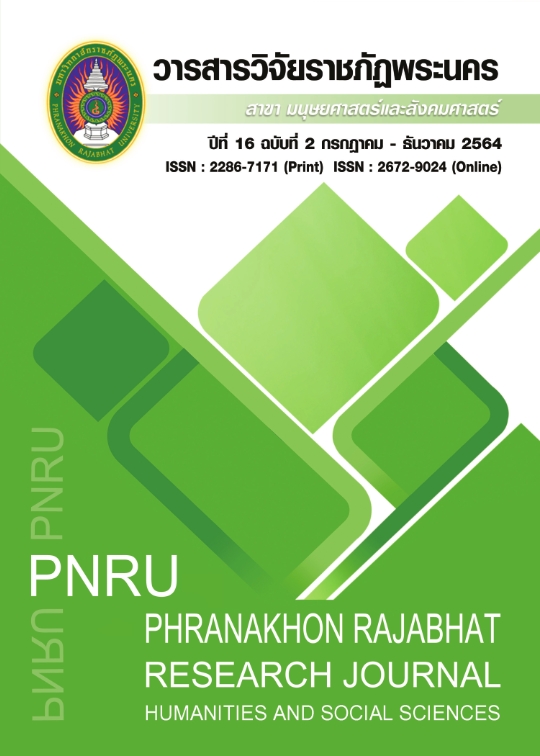ANALYTICAL HIERARCHY PROCESS (AHP) IN THE SUPPLIERS EVALUATION AND SELECTION : A CASE STUDY OF THAI DESSERT COMMUNITY ENTERPRISE, NAKHON NAYOK
Main Article Content
Abstract
The purposes of this study are as follows: 1) Study the importance of the factors affecting the decision to choose raw material suppliers of Thai dessert community enterprises. and 2) Evaluate the Suppliers’ Evaluation and Selection of Thai dessert community enterprises. There are five factors defined as follows: (1) service; (2) delivery; (3) reliability;(4) quality; and (5) price. The sample used in the research was done using purposive selection. Similar characteristics are three raw material suppliers in Nakhon Nayok Province. Using research tools such as questionnaires and Microsoft Excel programs, the data were analyzed using the Analytic Hierarchy Process (AHP) technique. The results showed that: 1) Priority of factors affecting the decision to select raw material suppliers of Thai dessert community enterprises. Sorted from most to least: (1) service; (2) delivery; (3) reliability; (4) quality; (5) price; and 2) Evaluation of the delivery model selection of the Thai dessert community enterprises. Priority, relationship, prioritization, choice, service is 58 percent, delivery is 18 percent. and reliability is 14 percent, quality is 6 percent, and price is 4 percent respectively.
Article Details
Each publish articles were copyright by Phranakorn Rajabhat University
Any contents which appeared in each articles in the journal were authors personal opinion. It did not relate to Phranakorn Rajabhat University and other instructors in the university. Each authors would take responsibility on their articles. If there are any mistake, the authors will take responsibility themselves
References
Wiratchai N. (1999). Meta-analysis. Bangkok: Faculty of Education, Chulalongkorn University. (In Thai)
Chou, S. Y. & Chang, Y. H. (2008). A decision support system for supplier selection based on a strategy-aligned fuzzy SMART approach. Expert Systems with Applications. 34(4), 2241-2253.
Glaser-Segura, D., Anghel, L. & Tucci, J. (2010). Supply Chain Management and the Romanian Transition. Management & Marketing. 5 (2), 3-18.
Govindan, K., Seuring, S., Zhu, Q. & Azevedo, S.G. (2016). Accelerating the Transition Towards Sustainability Dynamics into Supply Chain Relationship Management and Governance Structures. Journal of Cleaner Production, 112(3), 1813-1823.
Jöreskog, K. G., & Sörbom, D. (1993). LISREL 8: Structural equation modeling with the SIMPLIS command language. Scientific Software International.
Junior, F.R.L., Osiro, L., & Carpinetti, L.C.R., (2014). A Comparison between Fuzzy AHP and Fuzzy TOPSIS Methods to Supplier Selection. Applied Soft Computing, 21, 194-209.
Keeble, B.R. (1988). The Brundtland Report: Our Common Future. Medicine and War, 4, 17-25.
National statistical office. (2018). The 2017 Food Consumption Behavior Survey. Bangkok: Statistical Forecasting Division, National statistical office. (In Thai)
Saaty, T.L. (1980). The Analytic Hierarchy Process. New York: McGraw-Hill.
Wagner, S.M., & Johnson, J.L. (2004). Configuring and Managing Strategic Supplier Portfolios. Industrial Marketing Management, 33, 717-730.
Wu, C., & Barnes, D. (2011). A Literature Review of Decision-Making Models and Approaches for Partner Selection in Agile Supply Chains. Journal of Purchasing and Supply Management. 17, 256-274.


